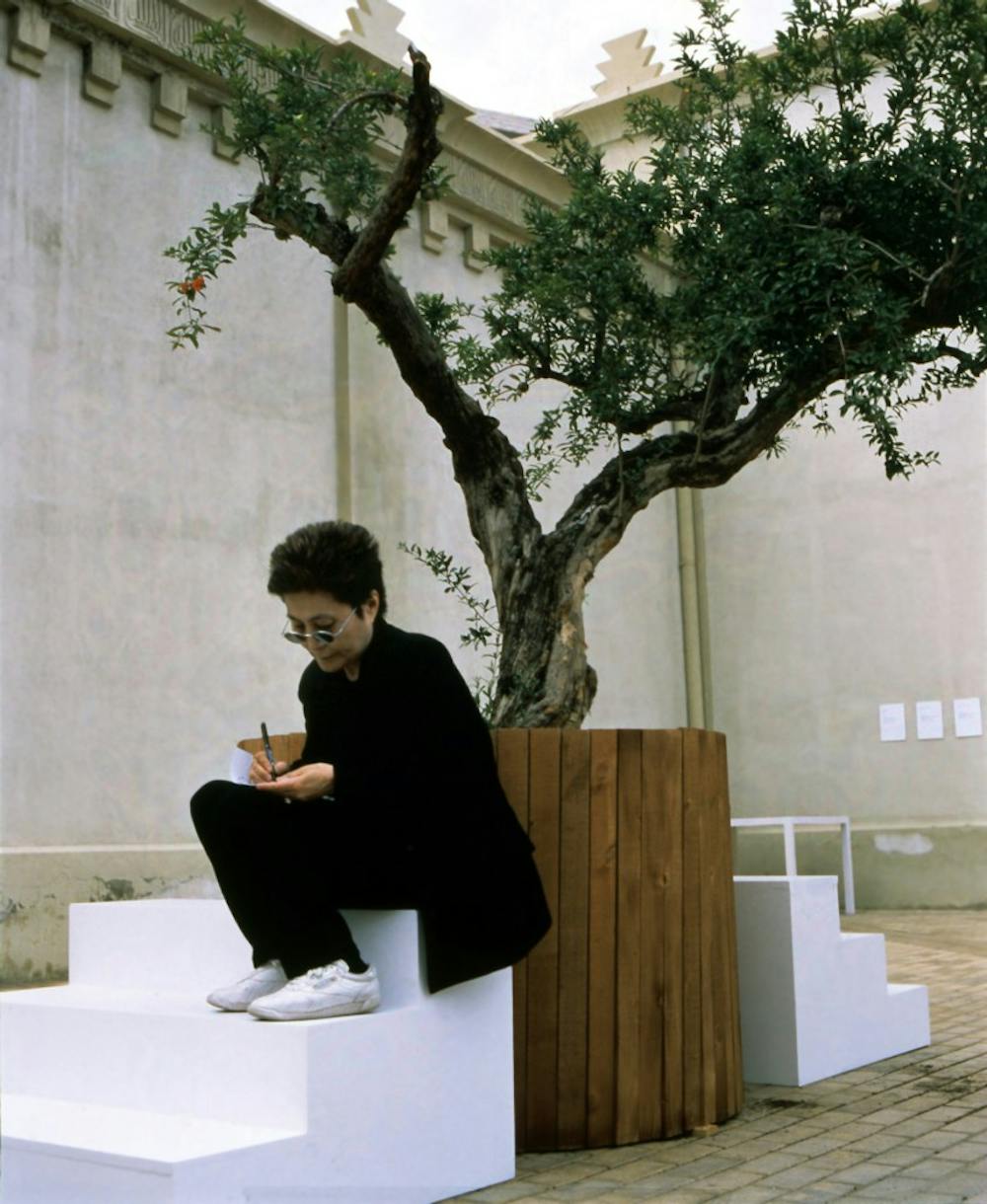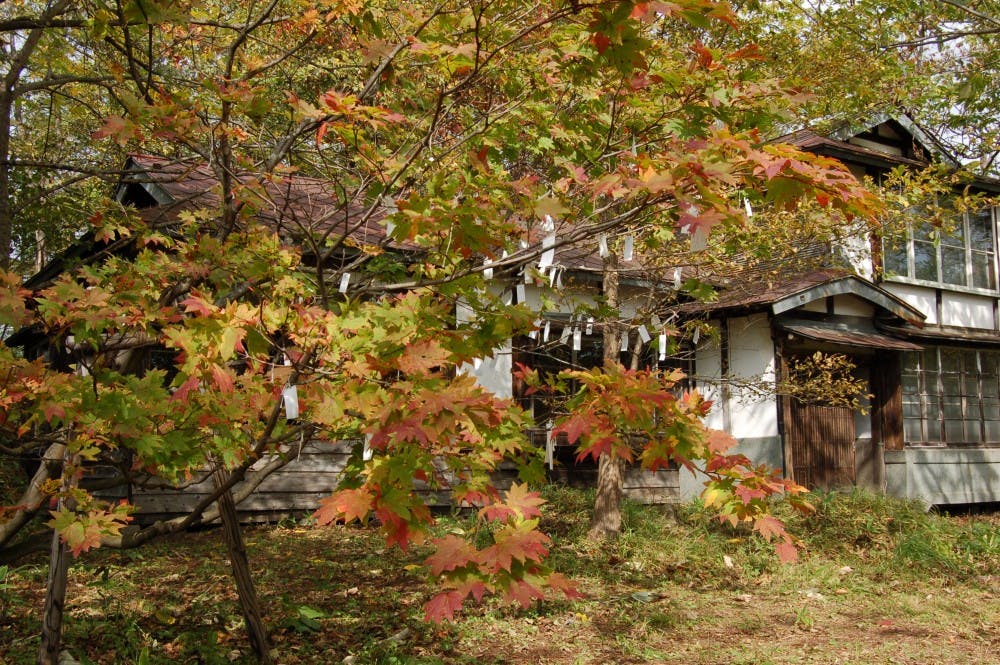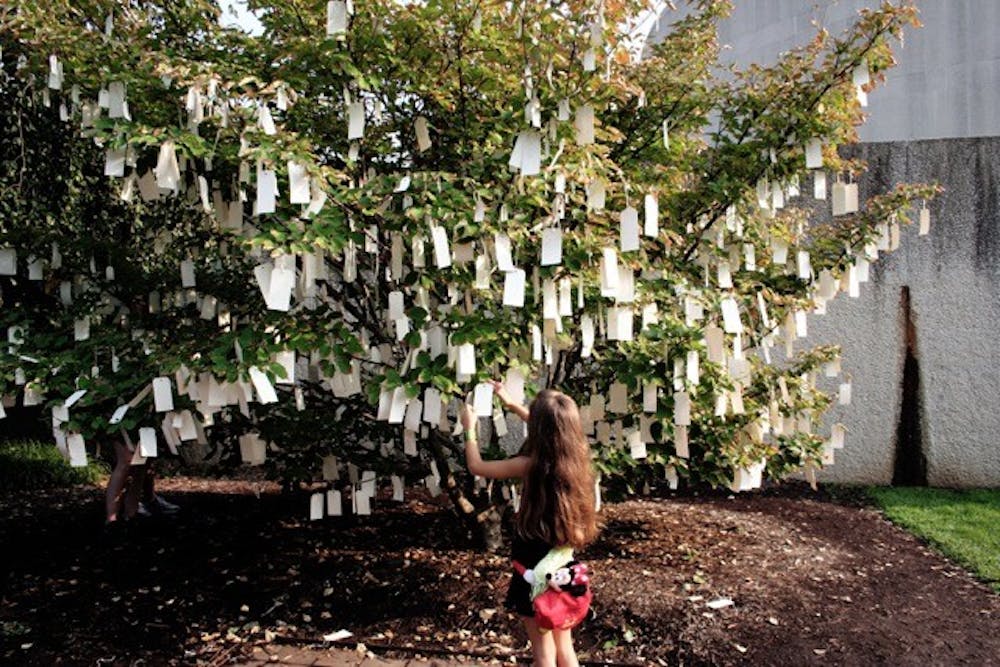Maybe you've wished on a penny, or a star, or an eye lash, but odds are, you've never wished on a tree. This Friday at College Green, you can. Make a wish, write down the wish, tie it to a limb, and get a friend to do the same. Your wish will become one of a million others in Yoko Ono’s collection at the base of the Imagine Peace Tower on Viðey Island in Kollafjörður Bay in Iceland. This Friday on April 20, Ono’s Wish Tree for Peace, a part of her Wish Tree series, is coming to Penn.
The installation Wish Tree is an ongoing conceptual artwork, designed as a vehicle for optimism and hope. It started in Finland from a single tree, then a mini–forest, and now a series of trees, ranging from one to 21, across the world from Venice, Italy to Pasadena, California, and now to Philadelphia, Pennsylvania. In itself, Wish Tree is an open source piece, inviting anyone to stage an installation of their own under Ono's direction. The goal is simple: to share a wish, whether that be one for a better grade, for a new bike, or for world peace, and invite others to do so as well.
It may seem simple, frivolous even, to write down that your biggest desire at the time is for something like a bike. But to share a wish is to share something personal (no matter how personal). It’s to give a part of yourself—your desire, your motivation, or your interest—to someone else. And though the wishes themselves are not read by Ono to respect each writer’s privacy, the act of doing so opens you up to the limitless possibilities of sharing yourself. It’s an idea closely intertwined with Ono’s longstanding efforts to encourage harmony, unity, and breaking barriers between social groups.

“She’s a total lightning rod and a pioneer in how we think of the environment and how we think of our own role in increasing peace and calling for peace,” describes Wilson Fisher (C ’19), facilitator of bringing the Wish Tree for Peace to Penn. “It’s really beautiful to see an artist so steadfastly committed to a certain ideal.”
Penn's tree, a young Carolina silverbell (Halesia Carolina) is titled Wish Tree for Peace. Many of the other pieces of the installation, in comparison, are named according to their installation site; the one in D.C. Wish Tree for D.C. and the one in London Wish Tree for London. Such a choice—to omit Philadelphia in lieu of Peace—is, of course, intentional. In light of ongoing conversations and both national and international debates, wishes aren’t meant to be confined to a certain city, but rather meant to reflect broad abstract ideas, such as peace, that adapt and mold to each dynamic system. The renaming in itself is a recognition of the constant evolution of what’s going on around the world.
Yet, as with the other tree installations, the locality of the piece remains in that the trees are native to the installation sites—that is, the young Carolina silverbell, is an already–existing tree on campus. The wishes, the sharing of them, and the meaning of peace behind them are meant to weave into the existing surroundings.

So how does that boundless, broad idea play and wiggle into Penn? Penn is arguably a hub of diversity, but at the same time, exists in a bubble. There’s a degree of limits and confinements, perhaps so pervasive that it goes largely unnoticed. The Wish Tree for Peace, situated on College Green, is right at the center of campus. It’s at a good distance between all four schools. For Penn students, the tree is an encouragement to “transcend whatever self–imposed barriers that exist and to create interactions between otherwise disparate people,” says Wilson. Located outside of Van Pelt, the tree is also meant to serve as a reminder of Penn’s history and efforts to produce knowledge for the world.
Between symbolizing peace and the interdisciplinary studies, interpretation of the Wish Tree is ultimately up to the viewer. Make a wish and see it as bridging yourself to others. See it as an outlet to share your fleeting desire or your deepest darkest one. See it as a chance to be a part of the mass of voices Yoko Ono creates.
The Wish Tree for Peace is facilitated by Wilson Alex Fisher in partnership with the History of Art Department’s Methodologies Seminar, Robert Lundgren, the University Architect, and Studio One.

